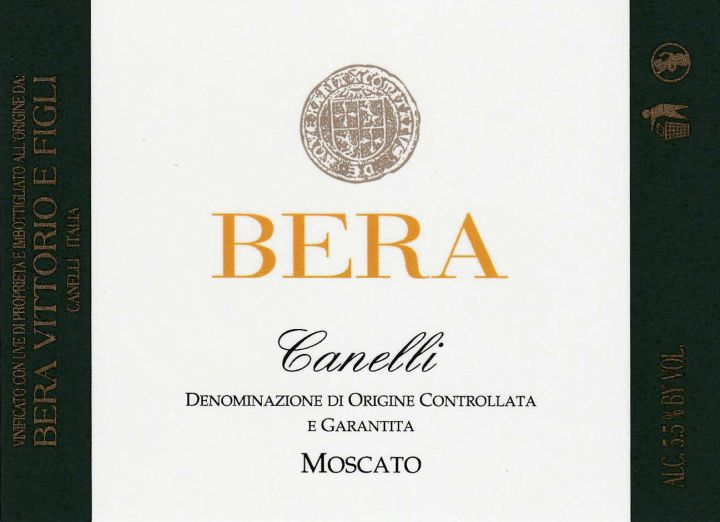Moscato DOCG Canelli

100% Muscat à Petits Grains. Canelli is the historic cradle of Moscato d'Asti production and Bera lies in the heart of Canelli. The Bera family was the first to estate-bottle Moscato d'Asti, starting in 1964. As of recently, the highest classification for this overcommercialized category of wine is now the elevated, quality-oriented DOCG Canelli, a positive development fought for by the Beras. 2023 is the first vintage in which their Moscato d'Asti is labeled as a Moscato DOCG Canelli.
Bera's sparkling Moscato is distinct in a variety of ways. Their focus on the quality of the vineyard work and the resulting fruit is unique. The only variety of Muscat planted on their property is the superior Petits Grains. The vines average around 40 years old and they have been farmed without chemicals forever (the farming is certified-organic). They grow on a steep south-southeast-facing slope on calcareous soils, allowing the grapes to ripen quite fully while maintaining freshness thanks to the limestone influence. High ripeness and high acidity is vital to the character of the wine. A perpetual strong breeze tempers the heat and helps keep the bunches healthy. Cover crops--varying in their make-up from vintage to vintage depending on the needs of the vines--grow between the rows. Bera's yields are naturally quite low. Harvest is manual, with rigorous sorting in the vineyard into small bins.
Fermentation takes place spontaneously with native yeasts and without temperature control or sulfur. None of that is typical in the realm of Moscato d'Asti production. The wine is also not sterile-filtered, like most Moscato d'Asti base wine at this stage, but is instead aged on its lees at cold temperatures in tank. When it is time to bottle, the tank is gently brought up in temperature to kick-start a secondary fermentation; when it hits the appropriate 5.5% alcohol level, the wine is gently filtered, lightly sulfured (a DOCG requirement) and re-chilled to settle in a pressurized tank. After a couple of weeks of rest, the sparkling wine in tank is bottled. This whole process is done in small batches; the later the wine of a given vintage is bottled, the longer it has spent on its lees, adding more depth to it. The end result is the most vinous, textured, complex, gently bubbly version of sparkling Moscato.
